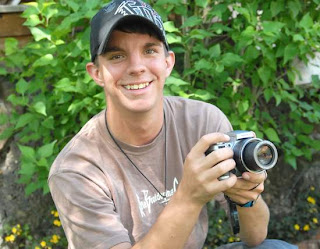 The Glenwood Springs Post Independent, a western
The Glenwood Springs Post Independent, a western It’s perhaps no groundbreaking move that a news outlet is using photos contributed by volunteers or readers. But this does mark one the first times a photojournalist is actually replaced by an amateur at no cost to the paper.
And why does that matter?
Well, ask any veteran of wedding photography and they’ll tell you a story of amateurs armed with new-fangled digital cameras who undercut their price by providing their service for next to nothing.
The beginning of the digital age of photography has spurred an admittedly predictable influx of photographers whose aspirations may not necessarily include, say, making a living.
And for the purposes of the consumers, for the purposes of the hundreds of thousands of entry-level photographers, that news is good news. The supply of the same run-of-the-mill photos increases, and the price drops dramatically.
For veteran wedding photographers, that changes their industry and gives them a few options.
They could (a) note that their photos – though they may be “good” – are worth less than they once were, and drop their price accordingly, (b) get frustrated, argue on the internet about how every time someone shoots for free, it hurts a professional and eventually leave their field to pursue an industry where fairness determines price, or (c) improve their product in a way that sets them apart from the droves of beginners with a decent eye and a kit lens.
 And, as illustrated by the Post Independent’s recent move, it’s not just wedding photography feeling the weight of the volunteers.
And, as illustrated by the Post Independent’s recent move, it’s not just wedding photography feeling the weight of the volunteers.
Meanwhile, in a story by the Photo District News about the paper’s decision, Daryl Lang illustrated what seems to be a common reaction from professional photographers: bitterness.
“For their sake, here’s hoping nothing happens this month in Glenwood Springs that is challenging to photograph,” Lang wrote.
Is it his assertion, then, that amateur photographers are inherently less talented or technically proficient than professionals? I would argue that, with the unbelievable amount of information given out by pros who also love to teach (e.g. Strobist, The Online Photographer, A Photo Editor), the line is thinning.
Case and point: Joey L.
19-year-old Joey L. is one of the most sought after photographers in advertising right now. Check out his work and you’ll understand why.
But the once-amateur Joey L. didn’t go to school to study photography. He worked hard, no doubt, but he learned the craft in the digital age with a Canon 5D (which, I think, is why I like him so much).
Joey shows that while technique and experience are very important, voice and style are infinitely more relevant.
So each branch of the photographic industry is changing. But it will be the jobs of the industry’s veterans to cope and respond in a way that differentiates their work from the loads of amateurs.
And really, that’s the story with journalism in general. The whole thing is reflective of “news for free,” blogger vs. news giant arguments. But the longer you hang on, the harder your evolution will become.
The bottom line: change or be changed.